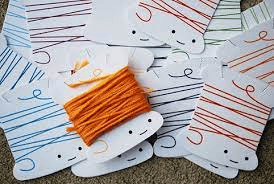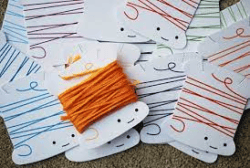Threading needles when completing sewing or other craft projects can be a frustrating experience that takes up your valuable time and patience. Often completed knitting projects require an element of sewing or stitching to put completed pieces together or to seam items. The ability to be able to thread a needle accurately and quickly is a useful skill for any needle worker.
How to make threading a needle easier:
. Use sharp scissors to cut thread, leaving a crisp end that is much easier to negotiate through the eye of the needle.
. Cut thread at an angle to form a sharp point, which can be angled more readily through the eye.
. Stiffen the thread with a medium such as beeswax. Dragging the end of the thread through the wax leaves a thread free from snags and fraying.
. Use slanted tweezers to hold the thread. A delicate hold as opposed to attempting to hold the thread with the fingers makes for easier placement.
. Use a needle threader, which often comes with stitching kits or can be bought separately. These are small triangular wires, which slip through the eye of the needle, taking the thread along with it.
What threads and needles should be used?
According to Good Housekeeping a smaller needle and thread should be used for more delicate fabrics such as silk or satin. A thicker needle and thread should be used with more durable fabrics such as cotton or linen.
The difficulty of threading a needle often depends on the size of the thread, the eye and the type of needle used in accordance with the project. A ready-made knitting kit often comes with larger needles, making them significantly easier to thread. These needles are known as darning or tapestry needles. Sites such as https://www.woolcouturecompany.com/collections/knitting-kits have lots of inspiration for knitted projects which come complete with the correct needles for sewing a finished piece together.
Finally, it is important that the thread you use is appropriate for the needle that you are trying to thread. Bobbin threads are especially fine and work well with a smaller-sized eye. Button and carpet thread are thicker and are easily usable with larger-eyed needles. Using the correct thread with the correct needle and eye size prevents the thread from fraying or snagging, which can result in an even more frustrating and time-consuming issue.



